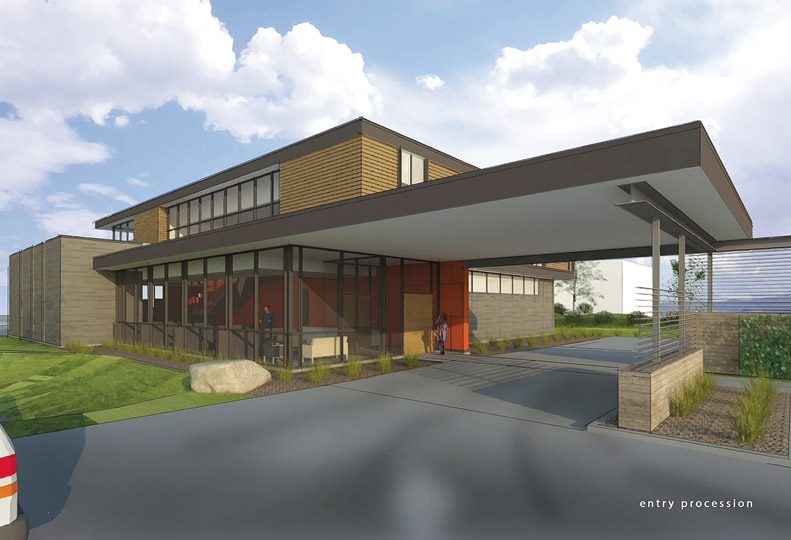
Home » Planned Parenthood set to build $5 million clinic
Planned Parenthood set to build $5 million clinic
Organization to replace facility north of downtown

October 22, 2015
Planned Parenthood of Greater Washington and North Idaho has submitted a building permit application to the city of Spokane for construction of a $5 million health and community education center north of downtown Spokane.
The building would be on Planned Parenthood-owned property east of the organization’s current health center at 123 E. Indiana.
Planned Parenthood communications manager Tiffany Harms says preliminary site work is scheduled to start this winter, and the organization hopes to begin construction by next summer. The building is expected to be completed in 2017.
Planned Parenthood’s current building at 123 E. Indiana was built in 1966, and the organization moved there in the 1980s, Harms says. The structure has 22,000 square feet of floor space, while the new one have 16,000 square feet of space, she says.
“But it will be more efficient, both in terms of how space is utilized and its environmental footprint,” Harms says.
She adds, “Patient care is our No. 1 priority, and we’re happy to report that the current health center will be demolished only after the new health center is completed, allowing for no interruption in the delivery of health care services at any point.”
The current building will be torn down to make way for a parking lot, she says.
Planned Parenthood of Greater Washington and North Idaho employs 150 staff across nine health centers, with about 55 working in Spokane. In addition to Spokane, it has affiliate sites in Spokane Valley, Pullman, Walla Walla, Pasco, Kennewick, Sunnyside, Yakima, and Ellensburg.
Staffers routinely travel to different sites. With the new building, Planned Parenthood anticipates adding about 10 more clinic and administrative employees, Harms says.
Planned Parenthood just started a $10 million public fundraising campaign for Spokane and affiliate sites, with a portion of the proceeds going toward the building project here.
“The new building will absolutely allow us to expand both health care services and the number of patients we are able to serve,” Harms says. “We anticipate patient visits to the Spokane health center, which currently account for 12,500 of our 45,000 visits annually, to increase by at least 50 percent in the next five years.”
Harms says the ability to see more patients will enable Planned Parenthood to better address some core health care issues in the Spokane area, specifically teen pregnancy.
“The city of Spokane has some of the highest rates of teen pregnancy in the state,” Harms says. “Overall, there is a strong need for health care providers who can offer the full range of birth control and reproductive health care available today, in addition to providing medically accurate sex education.”
The Spokane Regional Health District reported in 2014 that the teen population ages 15 to 19 in Spokane had an average pregnancy rate of 44.6 per 1,000, compared with a Washington state rate of 27.6 pregnancies per 1,000 teens.
“It’s clear there is still significant work to be done in Spokane to help youth have the resources they need to plan their futures,” Harms says.
Harms says Planned Parenthood is facilitating comprehensive teen pregnancy prevention programming with funding from the federal Office of Adolescent Health (OAH), which was first funded by the U.S. Department of Health and Human Services in 2010.
OAH supports and evaluates evidence-based teen pregnancy prevention programs and implements a Pregnancy Assistance Fund, coordinates health and human services’ efforts related to adolescent health promotion and disease prevention, and communicates adolescent health information to health professionals and groups, including those who serve youth, parents, and the general public, says OAH’s website.
“The community education center and state of the art classroom will provide much needed space for our teen council, families, young people, and community members to gather and participate in the most innovative, evidence-based sexual health education programming available,” Harms asserts.
The goal is to finance the building through a combination of donor support, low-interest debt, new market tax credits and current investments and operating funds, Harms says.
Latest News Special Report Health Care
Related Articles



